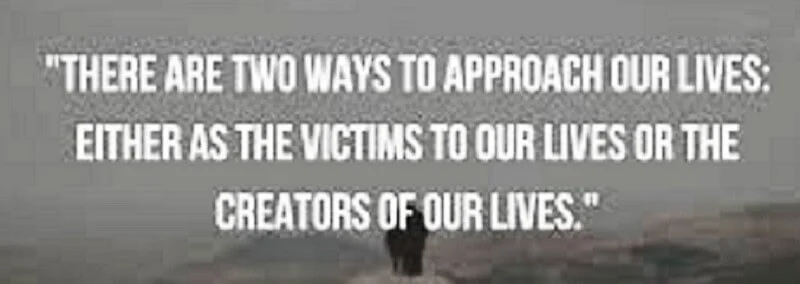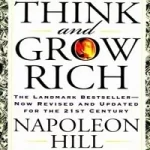Breaking the habit of being yourself can be a transformative journey towards personal growth and self-improvement. In our daily lives, we are often unaware of the habits that govern our actions and shape our identity. Whether it’s procrastination, overeating, negative thinking, or any other behavior pattern, these habits can hold us back from reaching our full potential. However, by understanding the science behind habits and adopting effective strategies, it’s possible to break free from old patterns and create a new, empowered self.
| Name of PDF | Breaking the Habit of Being Yourself PDF |
|---|---|
| No Pages | 360 |
| Author | Joe Dispenza |
| Published | 15 February 2012 |
| Language | English |
| Genres | Self-help book |
| Size | 2.24 MB |
| Chek, latest edition |
Table of Contents

The Habit Loop
At the core of every habit lies the habit loop: cue, routine, and reward. The cue triggers the habit, the routine is the behavior itself, and the reward reinforces the habit loop. By dissecting this loop, we gain insight into how habits are formed and how they can be changed. For example, if stress (cue) leads to overeating (routine), the feeling of comfort or relief (reward) reinforces this behavior.
The Science Behind Habits
Neuroplasticity, the brain’s ability to reorganize itself, plays a crucial role in habit formation. Every time we repeat a behavior, neural pathways in the brain are strengthened, making the habit more ingrained. Additionally, the neurotransmitter dopamine plays a key role in reinforcing habits by creating a sense of pleasure or reward associated with certain behaviors.
Identifying Your Habits
Self-awareness is the first step towards breaking old habits. By paying attention to our thoughts, feelings, and actions, we can identify patterns that keep us stuck in unhealthy behaviors. Journaling and tracking habits can be powerful tools for gaining insight into our habits and understanding the triggers that lead to them.
Understanding the Power of Belief
Our beliefs shape our reality, including our habits. If we believe that change is possible and that we are capable of breaking old habits, we are more likely to succeed. However, limiting beliefs can sabotage our efforts and keep us stuck in old patterns. By challenging and reframing these beliefs, we can pave the way for lasting change.
Rewiring Your Brain
Neuroplasticity allows us to rewire our brains and create new habits. Visualization techniques, where we vividly imagine ourselves engaging in desired behaviors, can help strengthen neural pathways associated with those behaviors. Additionally, engaging in new activities and experiences can create alternative pathways, making it easier to break old habits.
Creating New Habits
Setting clear, achievable goals is essential for creating new habits. Using the SMART criteria—specific, measurable, achievable, relevant, and time-bound—helps ensure that our goals are realistic and actionable. Habit stacking, where new habits are built upon existing ones, and environment design, where our surroundings support desired behaviors, can also facilitate habit formation.
Practicing Mindfulness
Mindfulness, the practice of being present in the moment without judgment, can help us become more aware of our habits and impulses. Mindfulness meditation techniques, such as focused breathing or body scans, can cultivate awareness and self-control, making it easier to break old habits and cultivate new ones.

Managing Triggers and Cravings
Understanding and managing triggers—external stimuli that provoke a habitual response—is crucial for breaking old habits. By identifying triggers and developing strategies to cope with them, such as finding healthier ways to deal with stress or boredom, we can weaken the habit loop. Similarly, learning to manage cravings by acknowledging them without giving in to them empowers us to resist temptation and stay on track.
Building a Support System
Surrounding ourselves with positive influences and seeking support from others can greatly enhance our ability to break old habits. Whether it’s friends, family, or support groups, having a supportive network can provide encouragement, accountability, and guidance throughout the journey of change.
Dealing with Setbacks
Setbacks are a natural part of the change process and should be viewed as opportunities for growth rather than failure. By reframing setbacks as learning experiences and identifying what went wrong, we can adjust our approach and continue moving forward. Embracing resilience and perseverance is key to overcoming obstacles and staying committed to our goals.
Celebrating Success
Recognizing and celebrating milestones along the way reinforces our progress and motivates us to keep going. Whether it’s reaching a weight loss goal, breaking a bad habit, or achieving a personal milestone, taking time to acknowledge our accomplishments boosts self-confidence and reinforces positive behaviors.
Staying Consistent
Consistency is essential for habit formation and lasting change. By committing to small, daily actions that align with our goals, we gradually build momentum and create lasting habits. Staying consistent, even when faced with challenges or setbacks, is crucial for maintaining progress and achieving long-term success.
The Role of Patience and Persistence
Change takes time, and breaking old habits is no exception. It requires patience, perseverance, and a willingness to keep trying, even when progress feels slow or difficult. By embracing the journey of change and trusting in our ability to grow and evolve, we can overcome obstacles and create a life aligned with our values and aspirations.
Conclusion to the Breaking the Habit of Being Yourself PDF
Breaking the habit of being yourself is a journey of self-discovery and transformation. By understanding the science behind habits, identifying our patterns, and adopting effective strategies, we can break free from old habits and create a new, empowered self. Through patience, persistence, and a commitment to growth, we can unleash our full potential and live a life of purpose and fulfillment.

FAQs about Breaking the Habit of Being Yourself PDF
How long does it take to break a habit?
Breaking a habit can vary depending on the individual and the complexity of the habit. On average, it can take anywhere from 21 to 66 days to form a new habit, but breaking old habits may take longer.
Is it possible to break deeply ingrained habits?
Yes, it is possible to break deeply ingrained habits with determination, effort, and the right strategies. While it may be challenging, with persistence and consistency, lasting change is achievable.
What are some common triggers for unhealthy habits?
Common triggers for unhealthy habits include stress, boredom, social pressure, emotional distress, and environmental cues. Identifying and managing these triggers is key to breaking old habits.
How can I stay motivated during the process of breaking old habits?
Staying motivated requires setting clear goals, tracking progress, celebrating successes, and surrounding yourself with supportive people. Additionally, practicing self-care, staying resilient, and focusing on the benefits of change can help maintain motivation.
What should I do if I experience a setback in breaking a habit?
Setbacks are a natural part of the change process. Instead of becoming discouraged, use setbacks as opportunities to learn and grow. Identify what went wrong, adjust your approach if necessary, and reaffirm your commitment to your goals.
What are the big three steps in breaking the habit of being yourself?
the environment, your body, and time
What is the book about breaking the habit of being yourself about?
unhappiness is the result of bad habits that make up our personality.
What is the main idea of breaking the habit of being yourself?
shows you how to tap into your mind’s unlimited potential and transform your life from the inside out.





